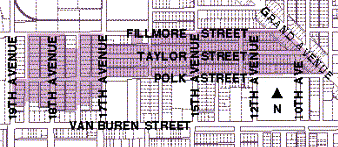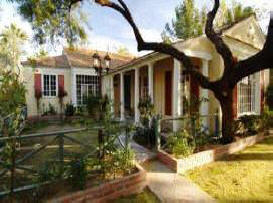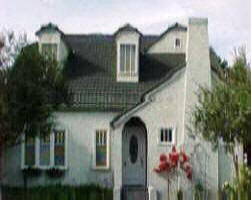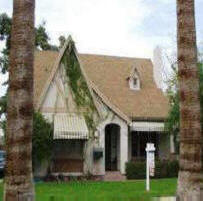Oakland
Historical District Map, History, Information & Homes Search
Homes For Sale In Oakland
Historic District

Oakland Historic District
Phoenix in the Earl Twentieth Century
By 1910, the population of the Valley had
doubled since the turn-of-the-century to over 10,000
residents. By the 1920's,
Historic Phoenix was experiencing
significant economic growth, transforming itself from a
primarily agricultural region to a retail and industrial
center. Phoenix' increased population strengthened its
tax base, and municipal services were quickly added that
shaped Phoenix into a city. Sewer lines were laid, roads
were widened and paved, and businesses of all types
located in the city. This period of rapid expansion
prompted early real estate companies and speculators to
experiment with planned subdivisions. These developments
offered affordable homes, based on popular styles with
efficient house plans, designed to attract the
working-class Phoenician with their "easy payment
plans." The
Oakland District represents the
development cycle that was typical of many of the early
residential developments in Phoenix.
Homestead Place
In 1885, a plat was recorded for a parcel of land owned
by Justice Charles A. Weed. Surveyed by William A.
Hancock, the man who had platted the original Phoenix
townsite, Weed's Subdivision, as it was originally
known, occupied the area bounded by Fillmore Street,
15th Avenue, Van Buren Street and 19th Avenue. Weed's
Subdivision consisted of four square parcels, each
divided into eight five-acre farm lots. A portion of the
area was also the first location of the Phoenix Country
Club. In 1909, the southern parcels were replatted into
four subdivisions, Capitol Place, Oakland,
Westlawn and
East Oakland. Collectively known as Homestead
Place, the area was subdivided to residential lots
and developed over the years 1910 to 1937.
Establishment of the
Oakland Neighborhood
The first of the areas to be subdivided was the
Capitol Addition in 1909, followed by Oakland in
1910, and Westlawn in 1911. East Oakland was not
developed until 1925, when the housing demand in Phoenix
had increased. The Oakland area, which forms the
core of the
Oakland
Historic District, was platted by the
Phoenix Realty Company with 133 lots. In 1914, the new
firm of Homebuilders, Inc. constructed fourteen homes in
the
Oakland subdivision. Homebuilders was one of the
first builders involved in speculative residential
construction. The firm was established in 1910 by two
realtors, Green and Griffen, to build homes on the lots
they subdivided. No other homes were constructed in the
area until after the completion of Cave Creek Dam in
1923.
The dam
removed the threat of seasonal flooding of Cave Creek,
allowing the area of Phoenix west of 15th Avenue to be
successfully developed for the first time. Due both to
the growth of local industry and commercial activity and
the accompanying population growth in Phoenix,
the neighborhood continued to grow. By 1938, the
Oakland neighborhood was occupied by small
Bungalows or
Period Revival Style houses and
palm trees had been planted along the major streets.
Historic Association of Oakland
The Santa Fe Railroad line and other industries
located west of 19th Avenue, adjacent to the Oakland
neighborhood, significantly influenced the
residential population. Most of the residents worked at
the railroad yard, or in several related industries
located at the western edge of the area. The
construction of the Standard Oil I Company warehouse at
19th Avenue, south of Fillmore Street in 1914, initiated
development of the area as an industrial corridor.
Valley Lumber and the Capitol Foundry followed soon
after. The Santa Fe Railroad subsequently developed its
maintenance yard and round house on the west side of
19th Avenue north of Fillmore Street. The size of the
railroad operation made the railroad the largest
employer of Oakland residents.
Architecture in Oakland
Modestly scaled Bungalow and
Spanish
Colonial Revival houses typical of the prevailing
architectural styles of the 1920's dominate the
Oakland District. The
Bungalows in Oakland are characterized by
broad porches and gable roofs and are often of brick
construction. Most of the
Bungalows in Oakland
were constructed from 1914 through 1925. After that
time, the
Spanish Colonial Revival Styles emerged
as the prevalent style in the
Oakland District.
Spanish Colonial Revival
houses are typically stucco construction with flat
or low pitched red tile roofs and arched door and window
openings.
Significance of the Oakland Neighborhood
The Oakland Historic District is
important as one of the few remaining
historic
neighborhoods in
downtown Phoenix. Its architecture and
development patterns are typical of working class
neighborhoods that flourished around central Phoenix
after the turn of the century. The
Oakland
neighborhood is historically important for its
strong associations with the Southern Pacific Railroad
and other industrial concerns that were important to the
economic development of Phoenix in the early
twentieth century. Architecturally, the
Oakland
Historic District illustrates the major historic
architectural styles that were once prevalent in
Phoenix
and the character of the historic neighborhoods in
Phoenix from the early twentieth century.
Information, maps
and photographs provided courtesy:
Historic Preservation Office of the City of Phoenix
Neighborhood Services Department
200 West Washington Street
Phoenix, Arizona 85003
(602) 261-8699 |
 |

Laura Boyajian
Mobile: 602.400.0008
HistoricCentralPhoenix@cox.net
|



